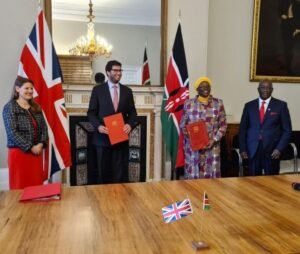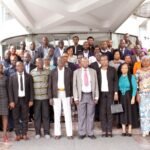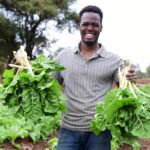By Verenardo Meeme , 14 December 2020
Kenya Marine and Fisheries Research Institute (KMFRI) in collaboration with International Centre of Insect Physiology and Ecology (ICIPE) have successfully incorporated Black Soldier Fly larvae as an alternative animal-based protein ingredient in local fish feed formulations.
The larvae replaces omena (fishmeal), which has been the main ingredient in fish diets. This has been possible through support from KMFRI and collaborative research efforts in INSFEED & SipFEED projects .
The news comes as a relief to fish farmers struggling with the high cost of fish feed, with increased operational expenses pushing many farmers out of the fish farming venture.
KMFRI’s Head of Aquaculture Division Dr Jonathan Munguti says many households in Kenya have incorporated omena in their day-to-day diet. This, he adds, has increased demand for the fish feed ingredient and created unhealthy competition. As a result, unethical business practices have taken root where traders add sand and shells to manipulate the weight of omena in a bid to rake in higher profits. This has rendered the ingredient unreliable in fish feed production.
Black Soldier Fly (BSF) larvae grow well in a variety of substrates including cow dung, kitchen waste, brewers waste and chicken droppings, making it cheap to grow. The larvae’s protein level is over 45% crude protein which makes it a practical and viable replacement for omena in fish feed formulation.
“Cost associated with fish feeds is key in determining whether farmers will stay in business. Fish feeds take over 50 per cent of the total operational costs and farmers must get it right,” said the Aquaculture nutrition research scientist Dr Munguti. “The choice of ingredients, their cost, nutritive content and availability impact on the final product.” Is impressive to see local feed manufacturers invest in fish feed production which has been a big breakthrough to the sector
Dr Munguti however indicated the high cost of feeds is not unique to Kenya, but is a global challenge. “The problem in Kenya is attributed to the quality of raw material, specifically fishmeal (omena) which is used in fish feed formulation locally,” he said.
He adds that numerous tests in the past failed to provide an effective alternative to omena.
According to Kenya Marine and Fisheries Research Institute (KMFRI), Black Soldier Fly can also be used as an ingredient in a variety of feeds for poultry, pig and dairy cows.
The impact of climate change has left some parts of the world vulnerable to hunger and poverty. And in an effort to cushion countless households staring at the grim possibility of losing their livelihoods, the Kenyan government is investing heavily in fisheries to encourage farmers to take up fish farming.
The recently launched World-Bank funded project – Kenya Climate Smart Agriculture Project (KCSAP) – is currently running in 24 counties in Kenya. The aim of KCSAP is to promote fish farming across the country to increase fish production from the current 18,000 to 71,500 metric tonnes, and consumption levels from 4.5 kg to 10 kg per capita per year by 2022 through adoption of climate-smart aquaculture technologies, innovations and management practices.
KMFRI is leading local universities, research institutions and private enterprises in KCSAP’s aquaculture value chain programme, which is aimed at promoting and validating fish health management practices to enable farmers adopt fish farming as an alternative source of livelihood.
“Crop farmers who rely heavily on rain-fed agriculture to grow maize, beans and the like have been hard hit by the negative effects of climate,” says Dr Munguti.
“Aquaculture is a climate smart technology. And if well managed it remains lucrative regardless of the prevailing climatic patterns,” he adds, “You don’t need to campaign for farmers to embrace fish farming, you just need to demonstrate it’s a lucrative venture.”
Food security and nutrition is a key pillar of President Uhuru Kenyatta’s Big Four Agenda unveiled in December 2017. Reduced cost of fish feed, which will ultimately lead to uptake of fish farming initiatives stand to contribute significantly to the achievement of the objective after decades of unreliable terrestrial agriculture, thanks to harsh effects of climate change.
Dr Munguti says despite the research breakthrough, continuous improvement in the fisheries sector is crucial for the growth of aquaculture. He indicates fish nutrition research scientists will continue to explore alternative sources of fish diet ingredients ranging from terrestrial plants, animal by-products, microalgae, insects; among others, to ensure feeds are affordable to farmers.








